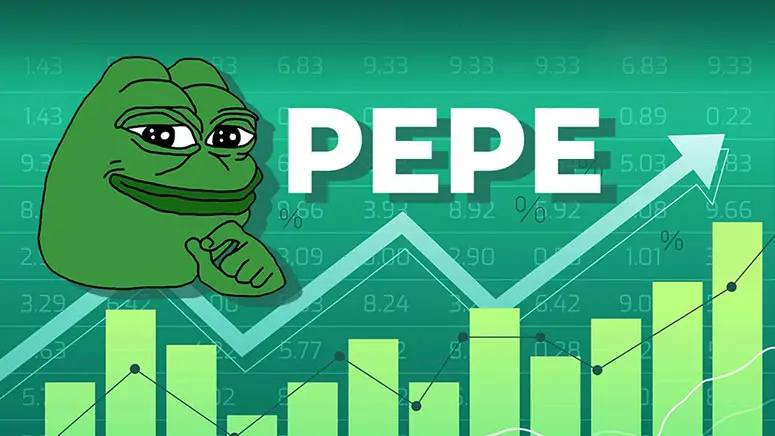The global economic landscape is a complex tapestry woven with the threads of various nations, each contributing to the overall fabric of the world economy. The size and strength of an economy are often measured by its Gross Domestic Product (GDP), which reflects the total value of all goods and services produced within a country’s borders. As of the latest available data, we delve into the Top 10 largest economies in the world, highlighting their unique characteristics, challenges, and contributions to the global economic stage.
United States
The United States consistently takes the lead as the world’s largest economy. With a GDP surpassing $21 trillion, the U.S. accounts for a significant portion of the global economic output. A diverse and technologically advanced economy, the U.S. boasts strong sectors such as technology, finance, healthcare, and manufacturing. However, challenges such as income inequality and a growing national debt pose concerns for sustained economic growth.
China
China has rapidly ascended the global economic ranks over the past few decades, emerging as the second-largest economy. With a GDP exceeding $16 trillion, China’s economic prowess is fueled by manufacturing, exports, and a burgeoning consumer market. The Chinese government’s strategic focus on innovation, infrastructure development, and globalization has propelled the nation forward, albeit not without challenges like debt accumulation and geopolitical tensions.
Japan
Japan, known for its technological advancements and industrial prowess, secures its position as the third-largest economy. With a GDP exceeding $5 trillion, Japan’s economy is characterized by a strong emphasis on export-oriented industries, including automotive and electronics. Despite facing demographic challenges such as an aging population, Japan continues to be a global economic force.
Germany
As the largest economy in Europe, Germany holds the fourth position globally. With a GDP exceeding $4 trillion, Germany is renowned for its manufacturing excellence, particularly in automobiles and machinery. The country’s robust export-oriented model, coupled with a skilled workforce and a commitment to innovation, has contributed to its economic success. However, Germany faces challenges related to an aging population and the transition to renewable energy.
India
India, with a GDP surpassing $3 trillion, is the world’s fifth-largest economy. Known for its diverse culture and a rapidly growing population, India has experienced significant economic expansion in recent years. Sectors such as information technology, telecommunications, and services play a pivotal role in India’s economic landscape. However, the nation grapples with issues such as poverty, infrastructure deficits, and bureaucratic hurdles that impact its growth trajectory.
United Kingdom
As a major player in global finance and a historic economic powerhouse, the United Kingdom secures the sixth spot. With a GDP exceeding $2.8 trillion, the UK’s economy is characterized by a strong services sector, including finance, healthcare, and education. Factors such as Brexit and the challenges of adapting to a post-industrial economy pose ongoing challenges for the UK.
France
France, with a GDP surpassing $2.7 trillion, stands as the seventh-largest economy globally. Known for its cultural contributions and a diverse industrial base, France has a well-established aerospace, automotive, and luxury goods sector. The French economy, however, faces challenges related to labor market reforms and maintaining competitiveness on the global stage.
Brazil
Brazil, as the largest economy in South America, holds the eighth position globally with a GDP exceeding $1.6 trillion. Rich in natural resources, Brazil’s economy is heavily influenced by agriculture, mining, and energy sectors. Challenges such as corruption, income inequality, and environmental concerns pose obstacles to sustained economic growth.
Italy
Italy, with a GDP exceeding $1.5 trillion, secures the ninth spot among the world’s largest economies. Renowned for its cultural heritage and contributions to art and fashion, Italy’s economy is diverse, with strengths in manufacturing, design, and tourism. However, the country faces economic challenges such as high public debt, slow growth, and political instability.
Canada
Canada rounds out the Top 10 largest economies with a GDP surpassing $1.4 trillion. Known for its vast natural resources, including oil, minerals, and timber, Canada’s economy is characterized by a strong emphasis on commodities. The nation faces challenges related to environmental concerns, indigenous rights, and economic diversification beyond resource extraction.
The Top 10 largest economies in the world form the backbone of the global economic system, each contributing in its unique way to the interconnected web of trade, innovation, and prosperity. While these economic powerhouses face a myriad of challenges, from demographic shifts to environmental concerns, their ability to adapt and innovate will determine their future trajectories. As the world continues to evolve, so too will the dynamics of these economic giants, shaping the course of global economic history.
Trends and Challenges Shaping the Future
In examining the current landscape of the top 10 largest economies, several trends and challenges emerge that are likely to shape their future trajectories.
Technology and Innovation:
The role of technology and innovation is pivotal for sustaining economic growth in the 21st century. Countries that invest in research and development, foster innovation ecosystems, and adapt to technological advancements are likely to maintain a competitive edge. The United States and China, in particular, are at the forefront of technological innovation, with Silicon Valley and Chinese tech hubs driving global advancements.
Global Trade Dynamics:
The interconnectedness of global trade is a defining feature of the world economy. Nations with a strong export-oriented focus, such as Germany and China, are heavily dependent on stable international trade relations. However, rising protectionism, trade tensions, and geopolitical uncertainties pose challenges to the traditional models of global trade, impacting these economies.
Environmental Sustainability:
As concerns about climate change intensify, countries are increasingly pressured to adopt sustainable practices. Germany and the United Kingdom, for example, are making strides in transitioning to renewable energy sources. Balancing economic growth with environmental responsibility is a challenge that all nations must grapple with to ensure long-term sustainability.
Demographic Shifts:
Several of the top economies, including Japan and Germany, face demographic challenges such as aging populations and declining birth rates. These demographic shifts have implications for labor markets, social security systems, and overall economic productivity. Countries must implement policies that address these challenges, such as encouraging immigration and investing in education and healthcare.
Social and Income Inequality:
Addressing social and income inequality is an ongoing challenge for many economies. The United States, in particular, faces significant disparities in wealth distribution. Countries that successfully implement policies promoting inclusive growth, access to education, and social welfare are likely to foster more stable and sustainable economic environments.
Political Stability and Governance:
The stability of political systems and effective governance are crucial factors for economic development. Brazil and Italy, for instance, have experienced political instability and governance issues that have impacted their economic performance. Nations that prioritize political stability, transparency, and the rule of law create an environment conducive to investment and economic growth.
Future Outlook and Opportunities
As these top 10 economies navigate the challenges ahead, there are also significant opportunities for growth and development.
Emerging Markets:
Beyond the current top 10, emerging markets like India and others in Southeast Asia hold tremendous growth potential. These nations are experiencing demographic dividends, urbanization, and increasing consumer demand, making them attractive markets for investment and trade.
Technological Integration:
Embracing the digital revolution and leveraging emerging technologies such as artificial intelligence, blockchain, and 5G can drive economic growth. Countries that actively integrate these technologies into their industries and infrastructure are likely to enhance productivity and competitiveness.
Sustainable Development:
The global push for sustainable development presents opportunities for innovation and investment in clean energy, eco-friendly technologies, and green infrastructure. Nations that lead in sustainable practices can position themselves as leaders in the transition to a more environmentally conscious global economy.
Global Collaboration:
In an interconnected world, collaboration and international partnerships are essential. Addressing global challenges such as climate change, pandemics, and economic crises requires coordinated efforts. Countries that actively engage in diplomatic and economic collaboration can benefit from shared knowledge, resources, and opportunities.
Diversification of Economies:
Economic diversification is crucial for resilience. Countries overly dependent on a single industry or sector, like oil for Brazil and Canada, are vulnerable to market fluctuations. Diversifying economies through investments in technology, services, and alternative industries can mitigate risks and ensure sustained growth.
Navigating the Path Forward
The landscape of the world’s largest economies is dynamic and ever-changing. As these nations confront challenges and seize opportunities, their ability to adapt, innovate, and collaborate will determine their future standings on the global economic stage. The interconnected nature of the world economy emphasizes the importance of cooperation and shared responsibility in addressing common challenges.
While the top 10 economies have established themselves as economic powerhouses, the journey ahead requires a commitment to sustainable practices, inclusive growth, and the harnessing of technological advancements. The coming years will undoubtedly shape the global economic order, and the actions of these leading nations will influence the prosperity and well-being of people around the world.














